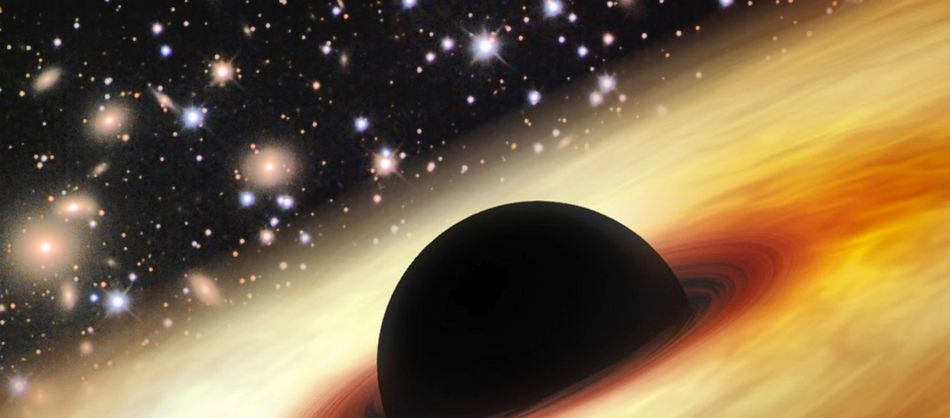We reach more than 65,000 registered users in Dec!! Register Now

Mystery of early black holes deepens with huge new find
- February 27, 2015
- 964 Views
- 0 Likes
- 0 Comment
Scientists have found what they call the biggest black hole in the early universe, a discovery that they say doesn't square with standard theories of cosmic evolution. The way most scientists understand it, objects in the early universe coalesced bit by bit through gravity. So really massive objects should not have ...
Scientists have found what they call the biggest black hole in the early universe, a discovery that they say doesn't square with standard theories of cosmic evolution.
The way most scientists understand it, objects in the early universe coalesced bit by bit through gravity. So really massive objects should not have formed very early on.
But a big black hole is, by definition, a really, really massive object. This new one breaks some records and is is 3,000 heavier than the black hole at the center of our galaxy, according to the researchers.
A black hole is an object so heavy and compact that its gravity draws in anything that gets too close. Most galaxies are believed to have huge black holes at their cores. A certain type of galaxy whose black hole is actively gobbling up material is called a quasar. Quasars are particularly bright because of heat generated in the violent process.
What the investigators in the new study said they found is the brightest quasar in the early universe, powered by the most massive black hole yet known at that time. The international team led by astronomers from Peking University in China and the University of Arizona is announcing their findings in the journal Nature on Feb. 26.
The quasar lies at an estimated 12.8 billion light-years from Earth. A light-year is the distance light travels in a year, meaning that scientists are seeing the object approximately as it was 12.8 billion years ago. The “Big Bang,” an explosive event thought to have originated the universe, had occurred less than a billion years earlier.
The central black hole weighs the equivalent of 12 billion Suns and is as bright as 420 trillion of them, according to the authors. It's also a huge puzzle, explained Xiaohui Fan of the University of Arizona's Steward Observatory, who co-authored the study.
“How can a quasar so luminous, and a black hole so massive, form so early in the history of the universe, at an era soon after the earliest stars and galaxies have just emerged?” Fan said. “And what is the relationship between this monster black hole and its surrounding environment, including its host galaxy?”
The quasar dates from a time close to the end of an important cosmic event that astronomers call “reionization”: a sort of cosmic dawn when a heavy fog over the whole universe gradually lifted.
First discovered in 1963, quasars are the most powerful objects beyond our Milky Way galaxy, beaming vast amounts of energy across space as the supermassive black hole in their center sucks in matter from its surroundings. Thanks to the new generation of digital sky surveys, astronomers have discovered more than 200,000 quasars, with ages ranging from 0.7 billion years after the Big Bang to today.
The new quasar is seven times brighter than the most distant quasar known, 13 billion years away, Fan and colleagues said, and it's brightest quasar with the most massive black hole among all known very distant, early quasars.
Feige Wang, a doctoral student from Peking University who is supervised jointly by Fan and Xue-Bing Wu at Peking University, the study's lead author, initially spotted the quasar.
“This quasar was first discovered by our 2.4-meter Lijiang Telescope in Yunnan, China, making it the only quasar ever discovered by a 2-meter telescope at such distance, and we're very proud of it,” Wang said. The “size” of a telescope refers to the width of its light-collecting area. After the initial finding, two telescopes in southern Arizona did the heavy lifting in measuring characteristics of the black hole: the 8.4-meter Large Binocular Telescope on Mount Graham and the 6.5-meter Multiple Mirror Telescope on Mount Hopkins.
The research team plans to further investigate the object with more international telescopes, including NASA's Hubble Space Telescope and the Chandra X-ray Telescope.
Source : http://world-science.net









